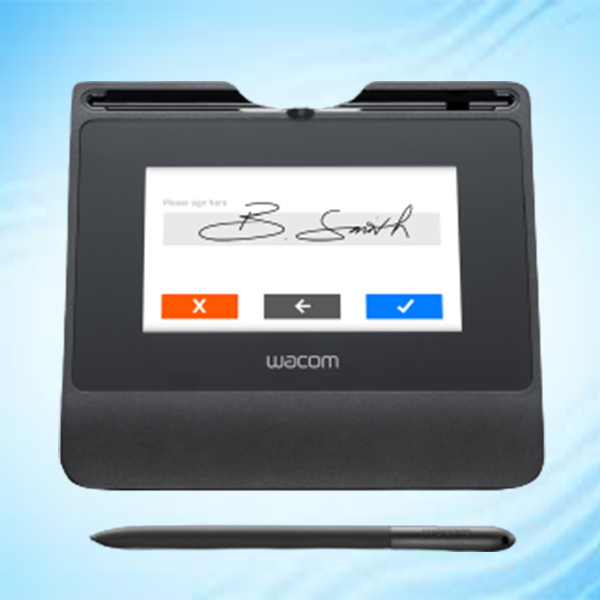Because our technology is embedded under the display, and not on signing surface, it delivers outstanding longevity. Unlike resistive technologies, Wacom products are not impacted by wear or scratches to the screen surface. Our patented EMR technology does not require batteries to power the pen and no wires to transmit signals, so they are maintenance free and will not fail if the tether is damaged. In addition to a robust design that provides years of service, our signature pads capture advanced biometric data for more accurate verification. The signature data can be transmitted securely with modern encryption capabilities. They also feature an ergonomic design that is comfortable to use and looks great on a counter, kiosk, or desk.

Wacom STU Series Signature Pads Dealers in UAE
Are Electronic Handwritten Signatures Right for Your Business?
Going paperless is not an easy task. Rarely do you have the luxury of specifying and deploying entirely new customer-facing systems from end-to-end. You will likely need to integrate new applications or functionality into existing systems. This requires diligence in researching your options and careful planning. Once your organization has determined that you want the benefits of a paperless process, the next step is to choose a method of collecting both authorizations and declarations of intent.
For centuries, the handwritten signature, stamp, or mark with ink on paper, has been universally accepted as a legally-binding method for committing to contracts and agreements. Extending this concept to the digital world makes a lot of sense. By nature, a signature is unique, and unlike a mouse click, a signature is given deliberately, so it inherently declares intent.
An individual’s signature cannot be forgotten, and if a forgery is attempted, the use of verification systems is a common practice. Laws are in place to protect the victims of forgeries. Electronic handwritten signature systems provide all of the benefits and safeguards as traditional wet ink signatures, but with much greater efficiencies.
Using handwritten signatures for purchase agreements, contracts, payment approvals, registrations, authorizations, consent, and other forms are a common practice worldwide. Acceptance and adoption of paperless technology is very high when signing with an electronic pen on a signature capture device. It is the most intuitive, natural, and familiar of all paperless methods. This means fewer disruptions in your quality of service, less training, a smoother transition, and more confidence in the new digital process.
If ink-on-paper handwritten signatures served your business or organization well in the past, but were too costly in terms of time and resources, then choosing electronic handwritten signatures will reduce your risk, satisfy your customers, and be the least disruptive to your systems and staff.




